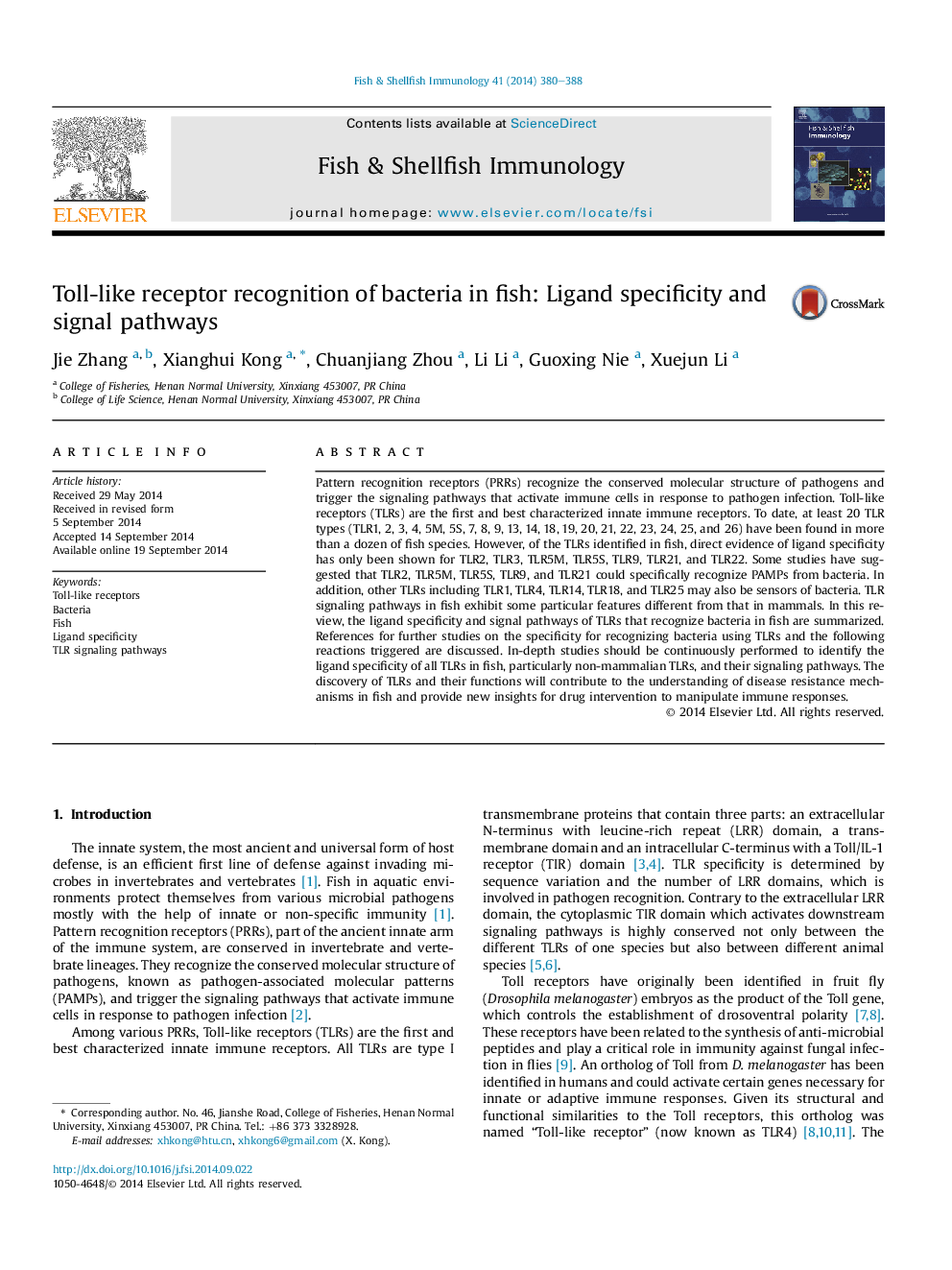| کد مقاله | کد نشریه | سال انتشار | مقاله انگلیسی | نسخه تمام متن |
|---|---|---|---|---|
| 2430919 | 1106740 | 2014 | 9 صفحه PDF | دانلود رایگان |
• Toll-like receptors (TLRs) could specifically recognize pathogenic microbes.
• Contrary to TLRs in mammals, TLRs have been massively expanded in fish.
• TLR2, TLR5M, TLR5S, TLR9 and TLR21 could sense the PAMPs from bacteria.
• The differences in TLR signal pathways between fish and mammals have been summarized.
Pattern recognition receptors (PRRs) recognize the conserved molecular structure of pathogens and trigger the signaling pathways that activate immune cells in response to pathogen infection. Toll-like receptors (TLRs) are the first and best characterized innate immune receptors. To date, at least 20 TLR types (TLR1, 2, 3, 4, 5M, 5S, 7, 8, 9, 13, 14, 18, 19, 20, 21, 22, 23, 24, 25, and 26) have been found in more than a dozen of fish species. However, of the TLRs identified in fish, direct evidence of ligand specificity has only been shown for TLR2, TLR3, TLR5M, TLR5S, TLR9, TLR21, and TLR22. Some studies have suggested that TLR2, TLR5M, TLR5S, TLR9, and TLR21 could specifically recognize PAMPs from bacteria. In addition, other TLRs including TLR1, TLR4, TLR14, TLR18, and TLR25 may also be sensors of bacteria. TLR signaling pathways in fish exhibit some particular features different from that in mammals. In this review, the ligand specificity and signal pathways of TLRs that recognize bacteria in fish are summarized. References for further studies on the specificity for recognizing bacteria using TLRs and the following reactions triggered are discussed. In-depth studies should be continuously performed to identify the ligand specificity of all TLRs in fish, particularly non-mammalian TLRs, and their signaling pathways. The discovery of TLRs and their functions will contribute to the understanding of disease resistance mechanisms in fish and provide new insights for drug intervention to manipulate immune responses.
Figure optionsDownload as PowerPoint slide
Journal: Fish & Shellfish Immunology - Volume 41, Issue 2, December 2014, Pages 380–388
